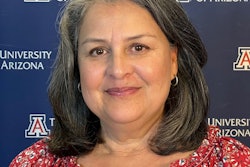Academic advising, institutional programs and student engagement are critical factors to Hispanic student success, according to officials at the University of Texas at El Paso (UTEP) and El Paso Community College (EPCC). The two schools have formed a joint partnership program for the students in their area.
Speaking at a session in the annual conference of American Association of Collegiate Registrars and Admissions Officers (AACRAO) held in Orlando, Fla., last week, the college officials said their joint initiatives were intended to encourage the largely Hispanic population (77 percent) in the town along the U.S.-Mexico border. The porous border traffic attracts trade, laborers and students, said Diana Guerrero, director of enrollment evaluation and technology at UT-El Paso.
“The majority of the students are commuters and female,” said Guerrero. “And many of them are first-generation from low-income families.”
These students have several fears when they go into college, including fear of large campuses or classes and fear of failure to manage time and resources.
It is important for EPCC and UTEP to work together to make the students understand the need for college and make them feel welcome on campus, said Tammie Campos, EPCC’s dean of students. The UTEP-EPCC Transfer Task Force assists students with the admissions and transfer process. ACCUPLACER — a skills-application test developed by the College Board — is used for placement by both colleges. EPCC teaches additional developmental courses that UTEP cannot offer, but some EPCC developmental math courses are taught on the UTEP campus, the school officials said.
The schools also identify the students who are at-risk for departure, said Cassandra Lachica, assistant director of admissions at UTEP. Risk of departure is associated with low GPA scores and with students who were 20 years of age or older at the time of first enrollment. Females and international students were less likely to quit college.
“Interestingly, we found that White, non-Hispanic males are the most likely to depart, compared to Hispanic students,” said Lachica.
Factors supporting graduation within six years include higher math-placement scores, higher GPA scores and financial aid. Females and international students are more likely to graduate as well. Other factors in graduating on time include not working more than 20 hours a week and not having a dependent (spouse, child or extended family member).
One of the more successful programs to help retain students has been learning communities at the school, said Guerrero. In Fall 2007, UTEP provided 58 learning communities to over 1,100 students, which helped them in academic advising and social support, as well as in connecting connect ideas across disciplines.
“The key is to engage students, make them believe in themselves, early and continually throughout their entire college experience,” said Guerrero.
Student engagement comes from when the college assumes that students can be successful, and the faculty and staff recognize the importance of their out-of-classroom learning experience, the officials said. Opportunities for engagement can be created in and out of the classroom when friends, faculty, coaches, tutors, family members provide a support network to make the students believe in the value of their college experience and their individual worth.
“They all understand why they need to be in college — to get a good job — and they are ready to make the commitment and sacrifices,” said Campos. “But it takes a lot of different things for them to understand why they need to finish college and get a degree.”
Click here to post and read comments
© Copyright 2005 by DiverseEducation.com















